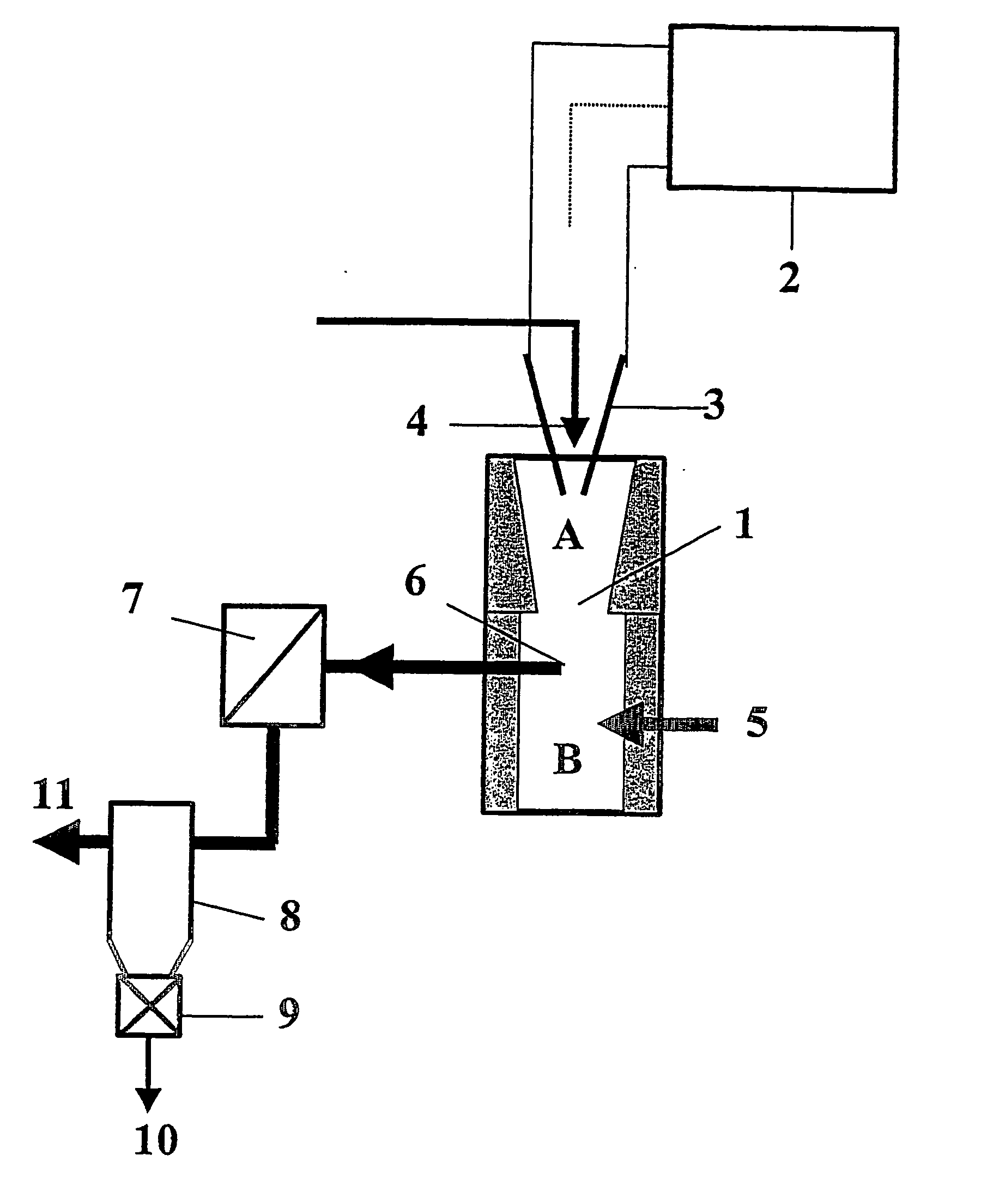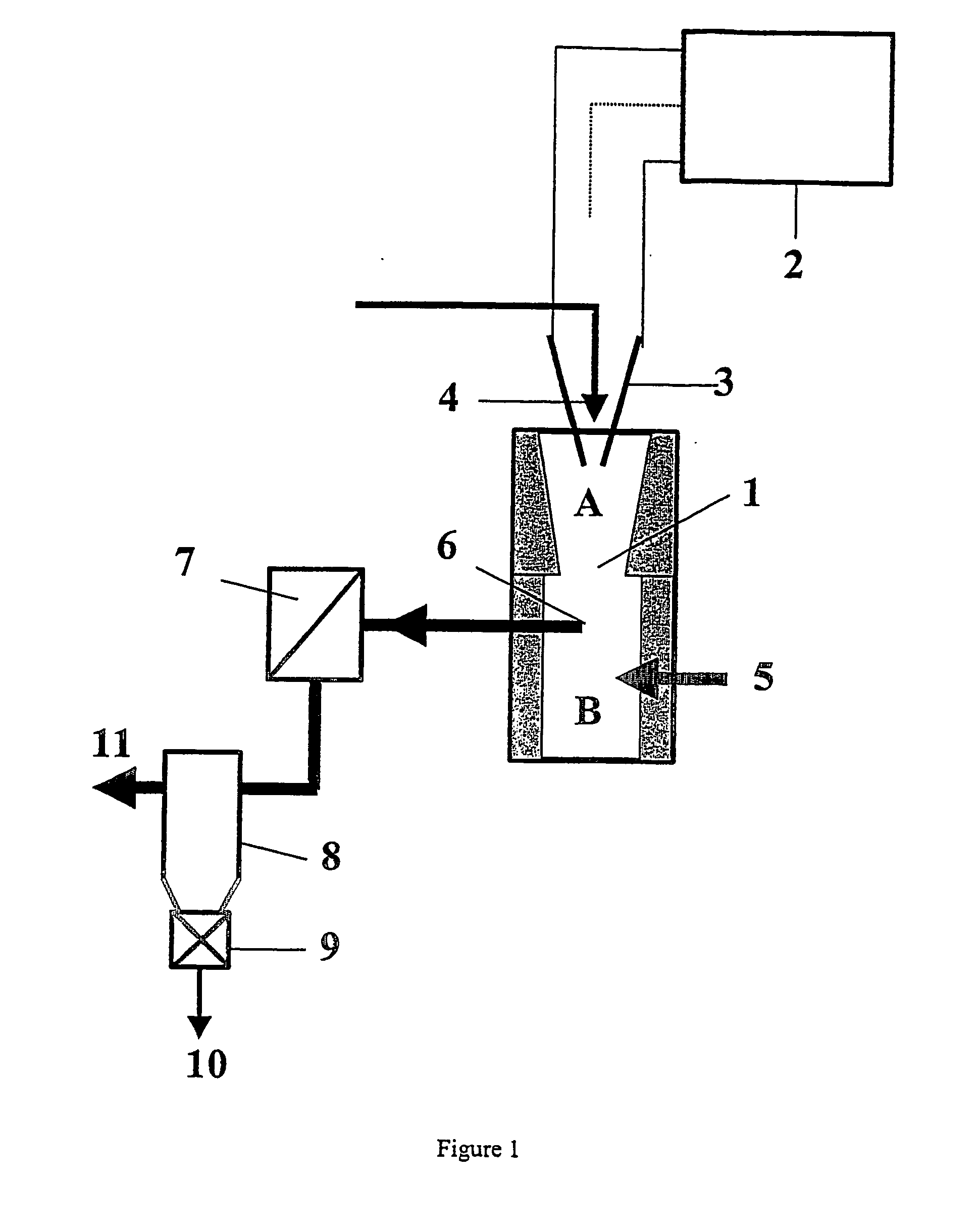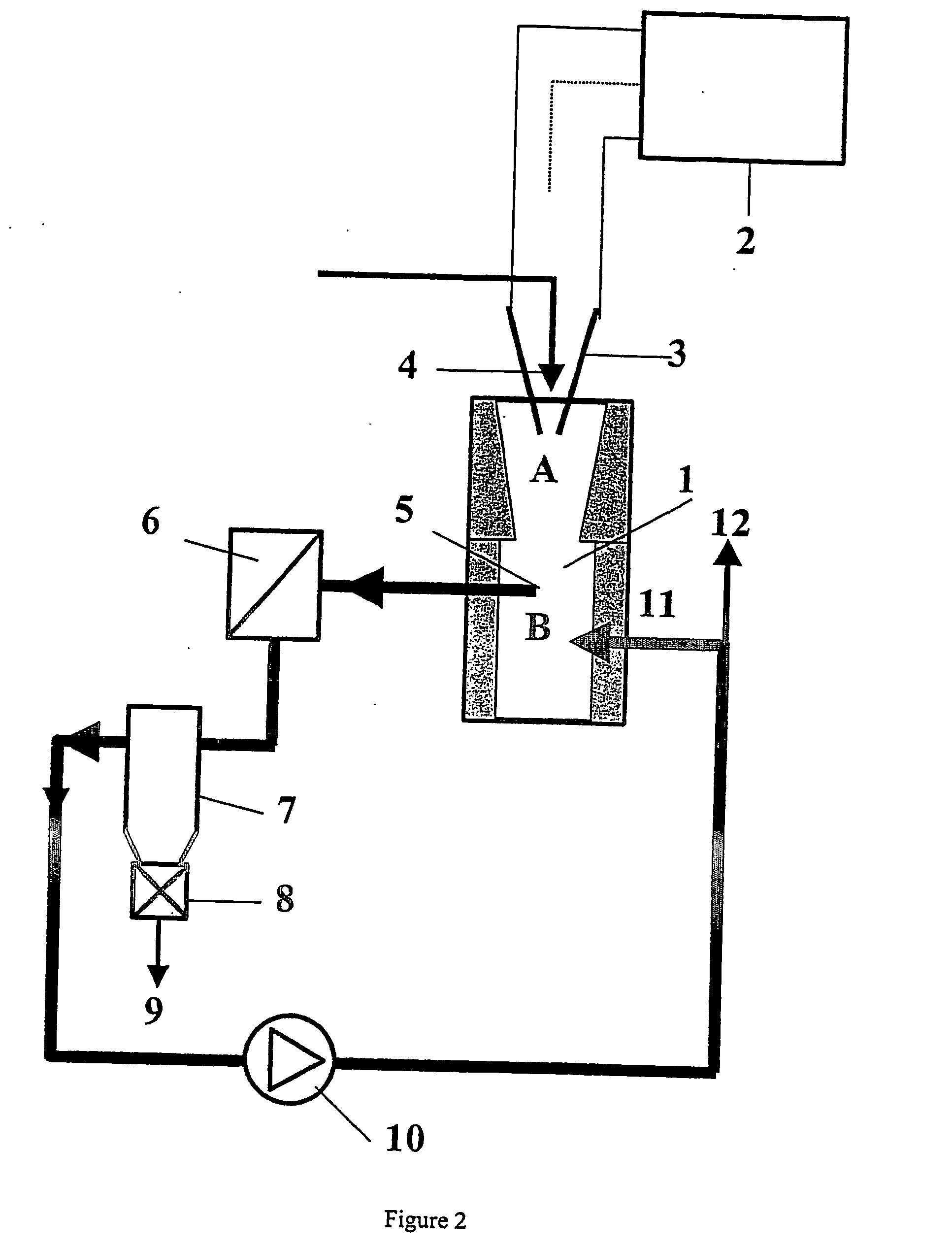Carbon nanostructures and process for the production of carbon-based nanotubes, nanofibres and nanostructures
a carbon nanotube and nanofibre technology, applied in the direction of physical/chemical process catalysts, metal/metal-oxide/metal-hydroxide catalysts, fullerenes, etc., can solve the problem of not being able to obtain the quantity of carbon nanotubes necessary for practical technology
- Summary
- Abstract
- Description
- Claims
- Application Information
AI Technical Summary
Benefits of technology
Problems solved by technology
Method used
Image
Examples
example 1
[0099] The reactor set-up, described in FIG. 1, consists of a cylindrical reactor of a height of 2 meters in stainless steel with water-cooled walls and 400 mm internal diameter. The upper part of the reactor is fitted with thermal insulation cone-shaped in graphite of 500 mm height and an internal diameter between 150 and 80 mm. Three electrodes in graphite of 17 mm diameter are positioned through the head of the reactor by a sliding device system electrically insulated. A central injector of 4 mm internal diameter allows the introduction of the precursor by means of a carrier plasma gas in the upper part of the reactor. A plasma power supply, employing a three phase electricity source up to 666 Hz with a maximum power of 263 kVA, a RMS current range of up to 600 A and a RMS voltage range of up to 500 V, was used to supply electricity to the three graphite electrodes, their tips being arranged in the shape of an inversed pyramid.
[0100] The carrier plasma gas is helium and the prec...
example 2
[0103] One operates in similar conditions to example 1 but according to the configuration corresponding to FIG. 2. Carrier plasma gas is nitrogen at a flow-rate of 2 Nm3 / h. The quenching gas is nitrogen at a flow-rate of 50 Nm3 / h. Electrical conditions are 350 A and 200 V. In these conditions necklace shaped carbon nanostructures are produced in very high concentration.
example 3
[0104] One operates in similar conditions to example 1 but according to the configuration corresponding to FIG. 2. Carrier plasma gas is helium at a flow rate of 3 Nm3 / h. The quenching gas is a mixture of nitrogen / helium at a flow rate of 50 Nm3 / h. Electrical conditions are those of example 1. The precursor is ethylene (C2H4) mixed with nickel-cobalt powders corresponding to a weight ratio in relation to the carbon of 3 weight % for the nickel and 2 weight % for the cobalt. The recovered product is composed of: 55 weight % of single walled carbon nanotubes, 13 weight % of carbon nanofibres and multi walled carbon nanotubes, the rest of undefined carbon nanostructures with catalyst particles.
[0105] The carbon nanostructures of FIG. 4-9 illustrate embodiments of the invention. The preferred carbon nanostructures of this invention have the structure of a linear chain of connected, substantially identical sections of beads, namely spheres or bulb-like units or trumpet shaped units, pre...
PUM
| Property | Measurement | Unit |
|---|---|---|
| Temperature | aaaaa | aaaaa |
| Temperature | aaaaa | aaaaa |
| Length | aaaaa | aaaaa |
Abstract
Description
Claims
Application Information
 Login to View More
Login to View More - R&D
- Intellectual Property
- Life Sciences
- Materials
- Tech Scout
- Unparalleled Data Quality
- Higher Quality Content
- 60% Fewer Hallucinations
Browse by: Latest US Patents, China's latest patents, Technical Efficacy Thesaurus, Application Domain, Technology Topic, Popular Technical Reports.
© 2025 PatSnap. All rights reserved.Legal|Privacy policy|Modern Slavery Act Transparency Statement|Sitemap|About US| Contact US: help@patsnap.com



